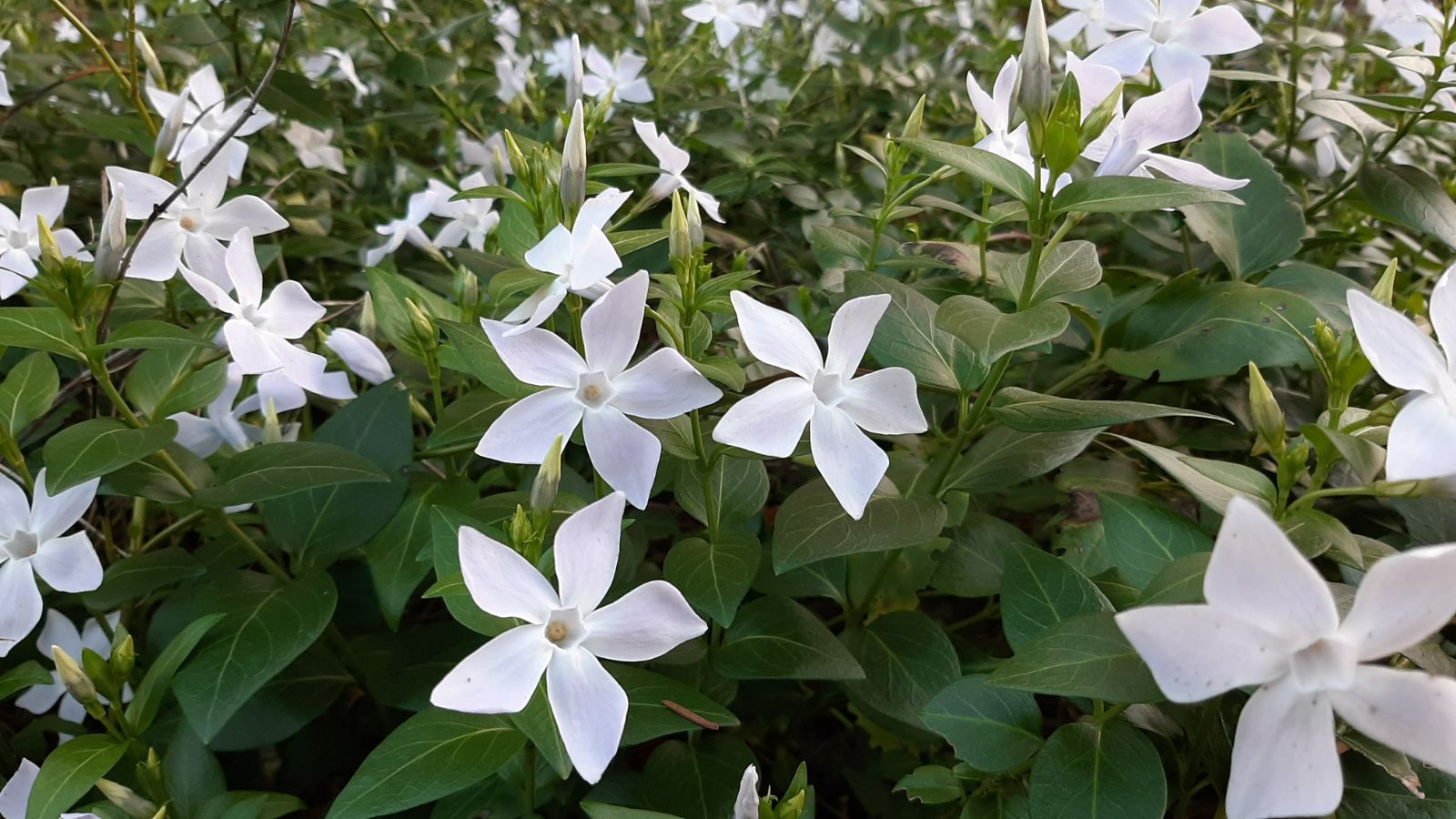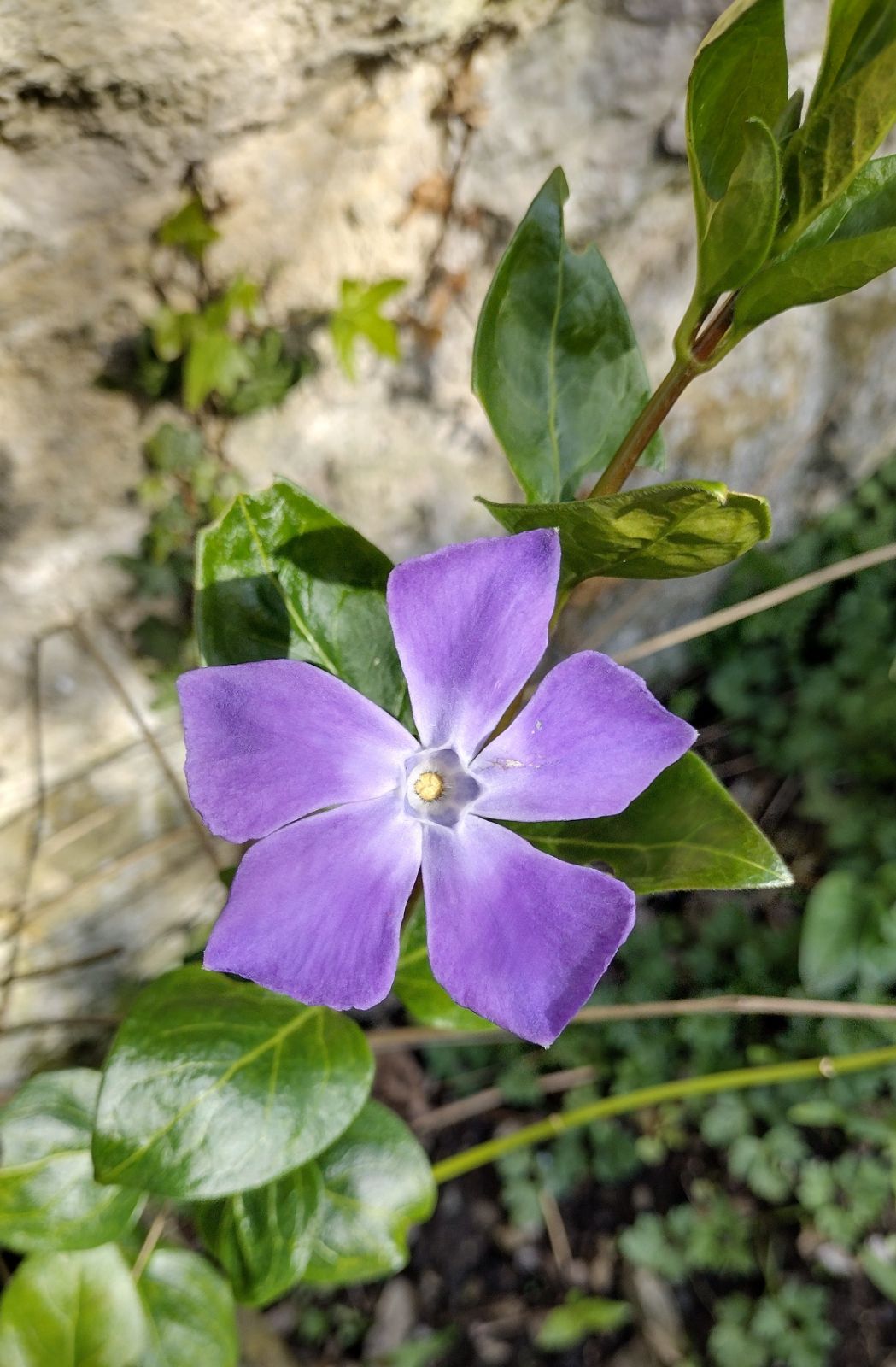Vinca
Credits
Article from Bean's Trees and Shrubs Hardy in the British Isles
Recommended citation
'Vinca' from the website Trees and Shrubs Online (treesandshrubsonline.
Family
- Apocynaceae
Common Names
- Periwinkle
A genus of seven species of subshrubs and herbaceous perennials, natives of the Old World from Europe and North Africa to Southwest and Central Asia (the tropical plant well-known as V. rosea is now usually placed in a separate genus as Catharanthus roseus). Leaves opposite, simple. Flowers solitary in the leaf-axils, stalked. Sepals five. Corolla with a narrowly funnel-shaped tube, which is hairy above the insertion of the stamens, and a spreading, five-lobed limb. Stamens five, inserted about the middle of the tube. Pistil of two united carpels and a single style, the latter widening upward into a disk-like structure known as a clavuncle, which bears a conical stigma surrounded by conspicuous tufts of hair. The fruit consists of two slender many-seeded follicles, rarely produced in Britain on open-ground plants.
The three species described are evergreen trailing shrubs, propagated with the greatest of ease by means of cuttings a few inches long, or by taking up old patches and dividing them. V. major is sometimes attacked by a parasitic fungus which turns the leaves yellow and ultimately kills them.
The most valuable work on the genus is: W. T. Stearn, ‘A Synopsis of the Genus Vinca …’ in Taylor, W. I., and Farnsworth, N. R. (eds), The Vinca Alkaloids (1973), pp. 19–94. There is a copy of this work in the Library of the Royal Horticultural Society. Dr Stearn’s contribution also comprises the cultivars of V. major and V. minor.
From the Supplement (Vol.V)
Trials of V. major and V. minor held at the R.H.S. Garden, Wisley, are reported on by Peter Barnes in The Garden (Journ. R.H.S.), Vol. 109, pp.426–9 (1984).



